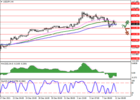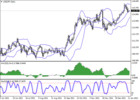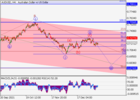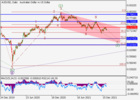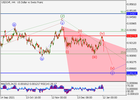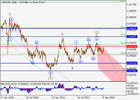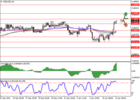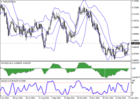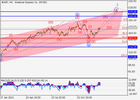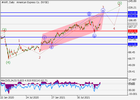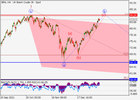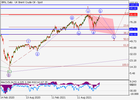SOLID ECN LLC
Solid ECN Representative
- Messages
- 511
General Electric Co.: shares develop upward dynamics
Current trend
General Electric Co. shares are experiencing a 2.7% corrective decline from a monthly high. The growth of the company's shares from the 11-month low of December 20 exceeded 12.5%, and over the past week the quotes strengthened by 3.30%, while the S&P 500 index declined by 2.62%.
Credit Suisse analysts initiated a "better than the market" rating on the issuer's shares with a target price of 122 dollars, reflecting a growth potential of more than 22% of the current price. The company's stocks lost more than 14% in value after the decision to split into three divisions – healthcare, energy and aviation, while the issuer plans to retain about 20% in the healthcare sector. Investment bank analysts believe that the pullback has created the potential for faster growth in 2022 after the cyclical recovery of General Electric Co. in 2022.
The company also announced the publication of a quarterly report on January 25. The Wall Street analysts forecast a 2.8% decline in revenue to 21.31B dollars with a 29.7% increase in earnings per share to 0.83 dollars. According to the results of the last two statistics exceeded market expectations for earnings per share by 39% and 67%, respectively.
Support and resistance
Recent trading sessions in the company are very active, at the same time there is no unidirectional trend. At the moment, the quotes are consolidating in the range of 95.00-102.00. Indicators do not give clear signals: the price is fixed between MA (50) and MA (200), the MACD histogram is located in the positive zone. Positions are to be opened from key levels.
Comparing company's multiplier with its competitors in the industry, we can say that the issuer's shares are neutral.
Resistance levels: 102.00, 107.00, 115.00.
Support levels: 95.00, 89.00, 80.00.
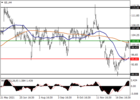
General Electric Co. shares are experiencing a 2.7% corrective decline from a monthly high. The growth of the company's shares from the 11-month low of December 20 exceeded 12.5%, and over the past week the quotes strengthened by 3.30%, while the S&P 500 index declined by 2.62%.
Credit Suisse analysts initiated a "better than the market" rating on the issuer's shares with a target price of 122 dollars, reflecting a growth potential of more than 22% of the current price. The company's stocks lost more than 14% in value after the decision to split into three divisions – healthcare, energy and aviation, while the issuer plans to retain about 20% in the healthcare sector. Investment bank analysts believe that the pullback has created the potential for faster growth in 2022 after the cyclical recovery of General Electric Co. in 2022.
The company also announced the publication of a quarterly report on January 25. The Wall Street analysts forecast a 2.8% decline in revenue to 21.31B dollars with a 29.7% increase in earnings per share to 0.83 dollars. According to the results of the last two statistics exceeded market expectations for earnings per share by 39% and 67%, respectively.
Support and resistance
Recent trading sessions in the company are very active, at the same time there is no unidirectional trend. At the moment, the quotes are consolidating in the range of 95.00-102.00. Indicators do not give clear signals: the price is fixed between MA (50) and MA (200), the MACD histogram is located in the positive zone. Positions are to be opened from key levels.
Comparing company's multiplier with its competitors in the industry, we can say that the issuer's shares are neutral.
Resistance levels: 102.00, 107.00, 115.00.
Support levels: 95.00, 89.00, 80.00.

